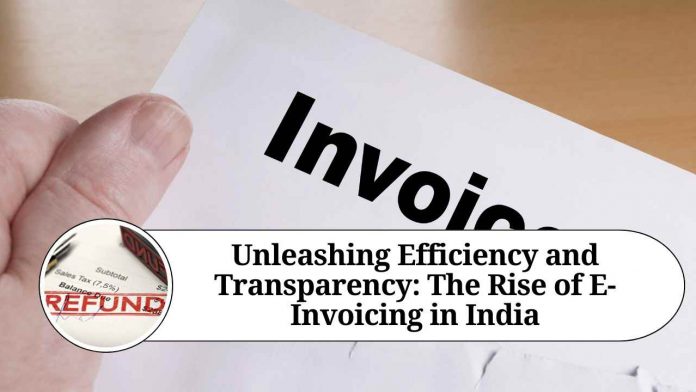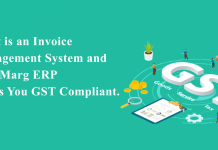Introduction
In today’s digital age, traditional paper-based invoicing is being rapidly replaced by its electronic counterpart, known as e-invoicing. With its numerous advantages, e-invoicing has gained significant traction across the globe, including in India. In this blog post, we will delve into the world of e-invoicing in India, exploring its benefits, implementation process, and impact on businesses and the economy.
- Understanding E-Invoicing: E-invoicing is the electronic exchange of invoices between suppliers and buyers, eliminating the need for paper-based documentation. It involves the generation, transmission, and archiving of invoices in a standardized digital format. In India, the adoption of e-invoicing aims to simplify and streamline the invoicing process, while promoting efficiency, accuracy, and transparency.
- The Implementation Process: The implementation of e-invoicing in India began with the introduction of the Goods and Services Tax (GST) regime in 2017. The GST Council recognized the potential of e-invoicing in reducing tax evasion, enhancing compliance, and improving the ease of doing business. Consequently, the government mandated e-invoicing for businesses meeting specified turnover thresholds.
The implementation of e-invoicing in India follows a structured approach. Businesses must generate invoices in the prescribed format, known as the e-invoice schema. The invoices are then uploaded to the Invoice Registration Portal (IRP), where they are validated and assigned a unique Invoice Reference Number (IRN). The validated invoices are subsequently shared with the recipient and the GST Network (GSTN), ensuring seamless data flow.
- The Benefits of E-Invoicing: E-invoicing brings a multitude of benefits to businesses, the government, and the economy as a whole. Let’s explore some of the key advantages:
a. Enhanced Efficiency: E-invoicing automates the entire invoicing process, reducing manual intervention, eliminating errors, and accelerating payment cycles. It simplifies reconciliation, minimizes data entry efforts, and frees up valuable resources for more strategic tasks.
b. Increased Compliance: With e-invoicing, businesses can ensure compliance with tax regulations and statutory requirements. Real-time validation and reporting to the GSTN minimize the risk of non-compliance and simplify the tax filing process.
c. Reduced Costs: E-invoicing eliminates the need for printing, storing, and transporting paper invoices. This leads to significant cost savings in stationery, storage space, and logistics. Additionally, streamlined processes and faster payments improve cash flow management.
d. Improved Transparency: The standardized format of e-invoices promotes transparency and reduces the scope for fraudulent activities. The seamless integration of e-invoicing with the GSTN allows for better visibility and monitoring of transactions.
- The Impact on Businesses and the Economy: The widespread adoption of e-invoicing in India has had a transformative impact on businesses and the economy. By enabling real-time reporting and seamless data exchange, e-invoicing has reduced tax evasion, resulting in increased tax revenues for the government. It has also facilitated better credit flow, enhanced supplier-buyer relationships, and improved business competitiveness.
For businesses, e-invoicing has unlocked operational efficiencies, reduced compliance burdens, and provided valuable insights through data analytics. The digitalization of invoices has paved the way for further automation and integration with other business processes, leading to enhanced productivity and profitability.
Conclusion
E-invoicing has emerged as a game-changer in the realm of invoicing in India. Its adoption has brought efficiency, transparency, and compliance to the forefront of business operations. As India continues its journey towards a digital economy, e-invoicing will undoubtedly play a pivotal role in driving economic growth.
Read more useful content:
Frequently Asked Questions (FAQs)
Q1: What is e-invoicing in India?
A1: E-invoicing in India refers to the electronic exchange of invoices between suppliers and buyers in a standardized digital format. It involves the generation, transmission, and archiving of invoices using a structured approach to streamline the invoicing process, enhance efficiency, accuracy, and promote transparency.
Q2: Who needs to comply with e-invoicing in India?
A2: Businesses in India with a specified turnover threshold are required to comply with e-invoicing. The turnover threshold is determined by the government and may vary over time. It is advisable to refer to the official notifications or consult with a tax expert to determine whether your business falls under the e-invoicing compliance criteria.
Q3: How is e-invoicing implemented in India?
A3: The implementation of e-invoicing in India follows a structured process. Businesses generate invoices in the prescribed e-invoice schema and upload them to the Invoice Registration Portal (IRP). The IRP validates the invoices and assigns a unique Invoice Reference Number (IRN). The validated invoices are then shared with the recipient and the GST Network (GSTN) for seamless data flow.
Q4: What are the benefits of e-invoicing in India?
A4: E-invoicing offers several benefits, including enhanced efficiency, increased compliance, reduced costs, and improved transparency. It automates the invoicing process, reduces errors, accelerates payment cycles, simplifies reconciliation, and minimizes data entry efforts. It also ensures compliance with tax regulations, simplifies tax filing, reduces paperwork, and improves cash flow management.
Q5: How does e-invoicing impact businesses and the economy in India?
A5: The widespread adoption of e-invoicing in India has had a transformative impact. It has reduced tax evasion, leading to increased tax revenues for the government. For businesses, e-invoicing unlocks operational efficiencies, reduces compliance burdens, and provides valuable insights through data analytics. It also facilitates better credit flow, enhances supplier-buyer relationships, and improves business competitiveness.
Q6: Is e-invoicing mandatory for all businesses in India?
A6: No, e-invoicing is not mandatory for all businesses in India. It applies to businesses meeting the specified turnover thresholds as determined by the government. It is advisable to check the official notifications or consult with a tax expert to determine whether your business falls under the e-invoicing compliance criteria.
Q7: How does e-invoicing contribute to the digitalization of the Indian economy?
A7: E-invoicing is a significant step towards digitalization in India. By eliminating paper-based invoices and promoting electronic exchange, it aligns with the government’s vision of a digital economy. E-invoicing streamlines processes, reduces paperwork, and facilitates seamless integration with other digital business processes, leading to enhanced productivity, profitability, and transparency.
Q8: Are there any penalties for non-compliance with e-invoicing in India?
A8: Yes, there can be penalties for non-compliance with e-invoicing regulations in India. The specific penalties may vary, and it is essential to stay updated with the latest notifications and guidelines from the government. Non-compliance can result in fines, penalties, or other legal consequences, depending on the severity and frequency of the non-compliance.
Q9: How can businesses prepare for e-invoicing implementation in India?
A9: Businesses can prepare for e-invoicing implementation by ensuring they have the necessary infrastructure, software, and processes in place to generate and transmit e-invoices. It is crucial to understand the e-invoice schema, familiarize yourself with the Invoice Registration Portal (IRP), and consult with a tax expert or software provider for guidance on compliance requirements




















